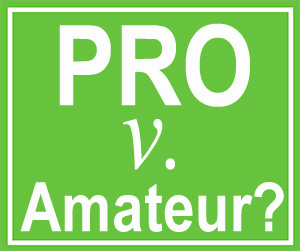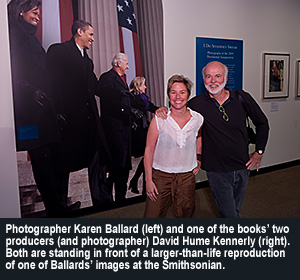Is The Amateur Really A Threat to the Pro?
 Consider the photographer who has an unlimited amount of time to accomplish an image. Or, the student, who has a week or two to complete an assignment on, say, lighting a bowl of fruit. Or, the hobbyist photographer, who stumbles upon a great image. Are these photographers a threat to the photographer who works on assignment?
Consider the photographer who has an unlimited amount of time to accomplish an image. Or, the student, who has a week or two to complete an assignment on, say, lighting a bowl of fruit. Or, the hobbyist photographer, who stumbles upon a great image. Are these photographers a threat to the photographer who works on assignment?
I submit that they are not, in almost all cases. Judy Hermann, over at the ASMP Strictly Business blog wrote a few days ago - A Walk in Your Client's Shoes - and noted, in part, "If it was your job on the line, what would you need to see, what would you need to hear, what would you need to know to feel safe hiring a particular photographer?"
A track record of success is one of the key elements that a prospective client is looking for. Sometimes, a client is looking for multiple jobs for the same client in a portfolio over a period of time - say, a campaign. This suggests continuity and consistency that they can depend upon. Sometimes, a client will see your coverage of a significant event, and determine that if you were hired (i.e. depended upon) to cover *that* event for someone, surely you could cover X event that your prospective client needs you for. And sometimes, not seeing just sample work on a website, but clips and covers is a demonstration that you can deliver on time and with a high degree of certainty.
When you are a student, you might shoot the assignment three or four times, realizing you missed a critical issue each time, and then, finally got it right. The hobbyist photographer can take thousands of images of the sunset, their kids, and so on and, based upon the laws of statistics, eventually get an amazing shot. Sometimes, they simultaneously stumble into *how* to make that image, and thus repeat it. Usually, however, they don't. Einstein once famously said "The definition of insanity is doing the same thing over and over again and expecting different results.”
No one has to say "he's a professional accountant", or, "she's a professional doctor." Merriam-Webster sets forth the use of the word "professional" - "participating for gain or livelihood in an activity or field of endeavor often engaged in by amateurs {a professional golfer}", thus, "professional photographer" needs the modifier "professional" in front of it. As does "professional surfer", "professional volleyball player," and, yes "professional bass fisherman."
Journalist Samuel Friedman wrote, in the CBS News piece - Outside Voices: Samuel Freedman On The Difference Between The Amateur And The Pro:
To treat an amateur as equally credible as a professional, to congratulate the wannabe with the title “journalist,” is only to further erode the line between raw material and finished product. For those people who believe that editorial gate-keeping is a form of censorship, if not mind control, then I suppose the absence of any mediating intelligence is considered a good thing.Rob Haggart, over at A Photo Editor, defined professional by quoting a Mario Batali, in writing that the difference between an "amazing amateur chef and a professional chef is the ability to make that perfect meal 100 times in a row." Thus, the counter to Einstein's insanity definition, is the definition of "professional" that I will put forth here. The definition of professional is "doing the same thing over and over again and expecting similar results."
How many times a month can a magazines' photo editor commission an assignment and get nothing usable back before their job is on the line? Once? Twice? If twice every other month a shoot was unusable, their judgement would be called into question and in short order they would lose their job. How about the advertising job, where the photographer can't deliver while the ad agency rep and their client are both on set, and the shoot fizzles because of the photographers' inability to deliver?
The challenge for the photo editor, art buyer, and so on, is to separate the wheat from the chaff, the professional who can deliver, from the amateur who has a nice portfolio, but can't be counted on with a high degree of certainty to produce. The problem arises, when the prospective client is not comparing apples to apples, but the professional and the amateur, as if they are interchangeable. It's one thing when the art buyer is looking at a stock image - it either is good enough, or it's not. It either meets their needs, or it doesn't.
However, when it comes to assigning work, commissioning it, or otherwise asking for images of non-repeating, or not-re-shootable work, getting a professional who can deliver, means the amateur will lose out. When the amateur doesn't lose out, a risk greater than gambling in Las Vegas is undertaken, and the commissioning party is betting their job. Over time, those who fail to discern the differences between the amateur and the professional, become the chaff to their "wheaty" brethren who survive in their field.
Please post your comments by clicking the link below. If you've got questions, please pose them in our Photo Business Forum Flickr Group Discussion Threads.


